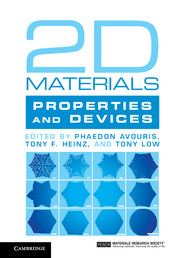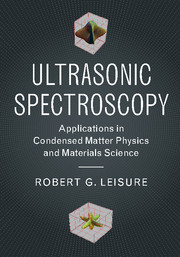The interactions among the atoms in a solid enable the propagation of waves. In contrast to electromagnetic waves, which involve oscillating electric and magnetic fields, the waves of interest here involve mechanical movements of the atoms or molecules. Also in contrast to electromagnetic waves, which are transverse in nature, the mechanical waves in a solid have both transverse and longitudinal character. Liquids and gases also support mechanical waves, but only the longitudinal polarizations are possible due to the absence of shear moduli in those states of matter. Such waves in gases (air) are, of course, sound waves. This term is extended to solids (for both longitudinal and transverse polarizations) where the waves are called “infrasound,” “sound,” or “ultrasound” depending on whether the frequency is respectively below, in, or above the audible range. In common usage the term “acoustics” seems to refer to all types of mechanical waves in solids, liquids, and gases, and that is the sense in which the term is used in the present work.
The treatment of acoustic waves in solids falls naturally into two regimes, depending on wavelength. If the wavelength is much greater than the interatomic spacing, the material is treated as a continuum and classical elasticity applies. For shorter wavelengths the discrete nature of the lattice must be taken into account and the approach of lattice dynamics is used.
AcousticWaves in the Classical Elasticity Limit
Acoustic waves described by classical elasticity find many uses. Just to mention a few, these uses involve basic problems in condensed matter physics, material inspections, device operations, and seismology. The basic equation of motion was developed previously, Equation 2.29, but will be repeated here for convenience, Using Equations 2.9, 2.42, and 2.46, and making an exchange of dummy indices within a sum produces,
where, as usual, i, j, k run from 1 to 3. Combining the previous equations gives,
for the new equation of motion in terms of the displacements ui.

